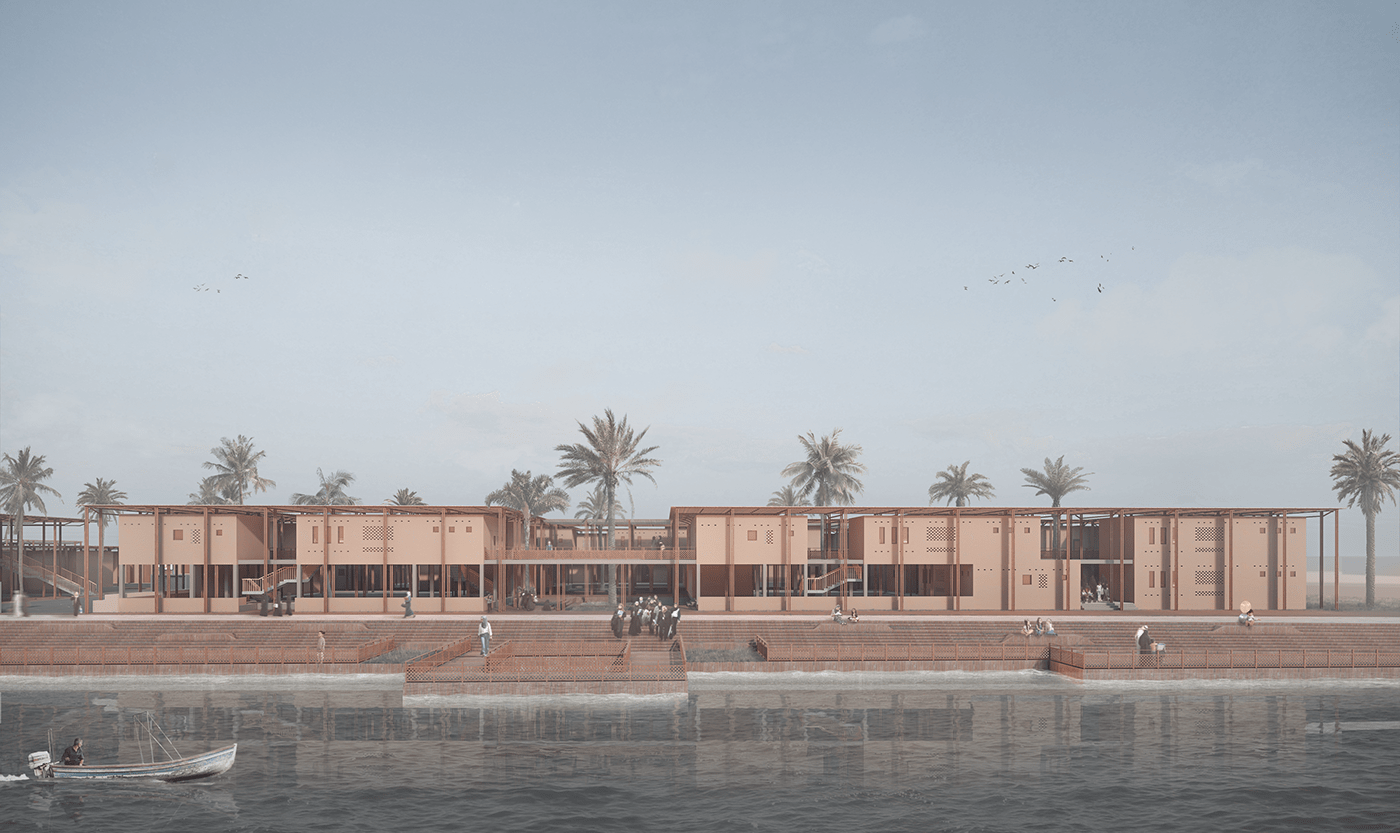
GIRLS SANCTUARY
SUBMISSION FOR TAMAYOUZ EXCELLENCE AWARD 2021 COMPETITION
(DEWAN AWARD FOR ARCHITECTURE)
ABOUT THE PROJECT
Location: Near Al-Mada'in, by the Tigris River, Iraq.
Plot size: 15,000 m2
It is situated in a green agricultural/rural area on the eastern bank of the Tigris river, offering the opportunity to raise the girls in a serene and healthy environment.
The maximum water level during spring is -2m
The minimum water level during summer is -4m


Tigris River
Tigris River is the eastern waterway of the two great rivers that define Mesopotamia (the other being the Euphrates). The river flows south from the mountains of the Armenian Highlands through the Syrian and Arabian deserts, and meets the Euphrates River in the Iraqi city of Basra, forming the Shatt Al-Arab. The Tigris River is an important source of both travel and irrigation.
The Tigris River also has a rich history that dates back to the earliest known civilizations, where several kingdoms were established on its banks because of its importance in a largely arid region. Our project site is on the bank of the Tigris.

Historical Context
The modern history of Iraq tells a dejected story of endless humanitarian crises particularly after the 1990 UN sanctions, which were then followed by the invasion of Iraq in 2003. The war had grave consequences and negative impacts on the Iraqi community and economy. It created an environment of turmoil, lacking the very fundamentals of human rights and infrastructure.
It is estimated that since 2003, there have been over 335 billion dollars in financial losses related to conflict in terms of weapon purchases, human casualty and disability. Human loss is even more grim: it is estimated that 151,000 to 1,033,000 lost their lives in the first three to four years of the war and the following instability. As a result, many children have grown up without parents, and in particular, their fathers due to the militarization.
In addition, the phenomenon of rural migration spiked as many families were driven away from their homes due to the deteriorating economic and political climate. They sought refuge and better opportunities elsewhere in the country, leading to a massive imbalance and rise in unemployment. Professional careers further turned into rural occupations, trades and crafts.
Recent statistics conducted by the Iraqi Ministry of Planning and Development reveal that “the number of orphaned Iraqi children has increased significantly in recent years and that there are some 500,000 living on the streets”.
Government statistics indicate that up to five million children live in difficult social conditions. And up to 25,000 children are leaving their homes either to go elsewhere in Iraq or abroad – per month.
Officials from Childhood Voices Association, a children’s non-governmental organisation, say that “there are 11,000 children addicted to drugs in Baghdad alone, that many girls aged 12 to 16 years old have been victims of abuse, and that many girls aged 12 years and above have endured harassment.”
The organization also quotes international reports stressing that “more than 1 million Iraqi children have entered the labor market with the increase in the rate of poverty (one third of Iraq’s population live under the poverty line) and that they suffer violence and abuse.” According to its report, 1.3 million children aged 8 to 16 years old, equal to 6.1% of the population, have become workers.

The Challenge
A quarter of Iraq’s children live in poverty, and a third of all children in Iraq are unable to access their basic human rights. Child poverty is a persistent issue in Iraq, which limits the potential of a large percentage of Iraq’s youth, curbs educational attainment, generates poor health in the individuals, and prevents children from realizing their basic rights.
There are many organizations dedicated to such matters; however, only a few of them are devoted to girls only. Girls are particularly at risk and suffer specifically from personal and societal stigmatization in ways that boys do not. In the past it has been more difficult to find official support for girls shelters. For this reason, the idea of a girls sanctuary emerged.
The sanctuary will be committed to the welfare of children throughout the whole of their childhood as a preventive measure in the fight against abandonment and social ostracism.
The sanctuary aims to restore the balance in life for the abandoned, destitute, and spiritually and physically traumatized children, and help in establishing a new environment where awareness of such issues is spread. It should also inspire NGOs to start taking control and contributing more to the community.
THE RESPONSE
The sanctuary provides security and a sense of community for the young girls, while presenting opportunities for them to stand out and contribute positively towards their community.
The environment of the sanctuary is not only a shelter, but it also reflects the possibilities of the built environment for supporting health, psychological, educational and cultural needs while harnessing the power of art and creativity to encourage young girls to express themselves, and be brought back into the culture of the country in a way that is open, progressive and nourishing for them. The river site plays a major role towards this goal.




